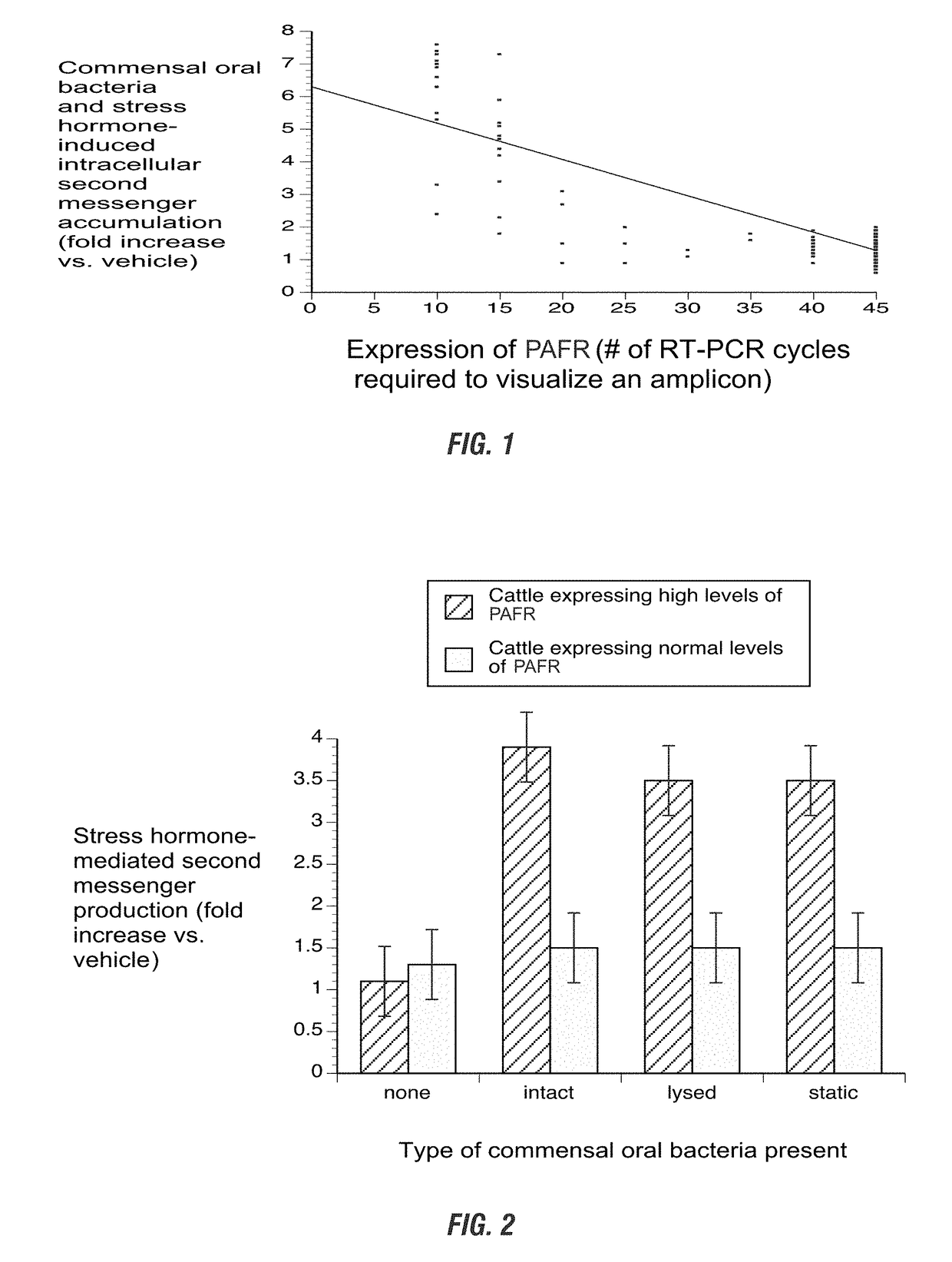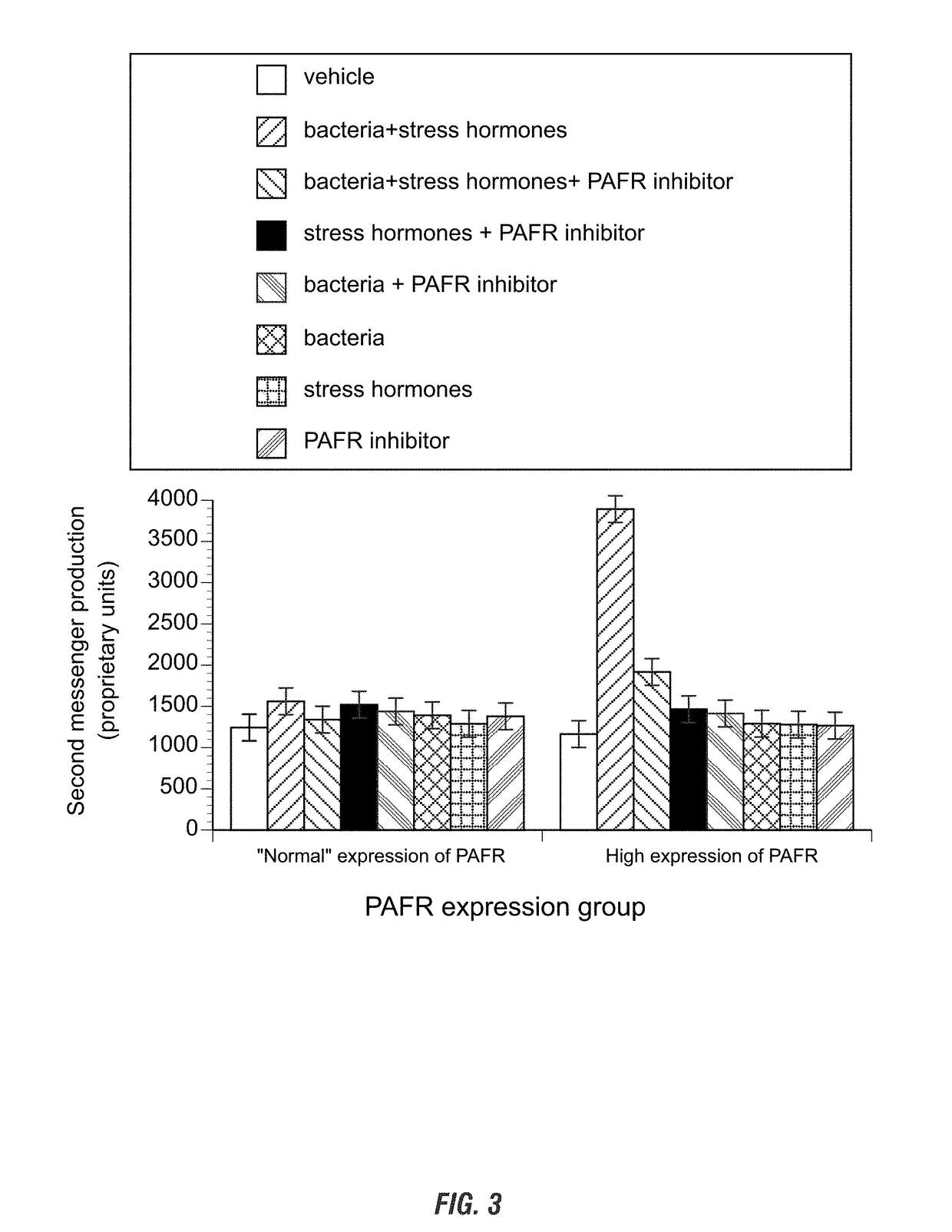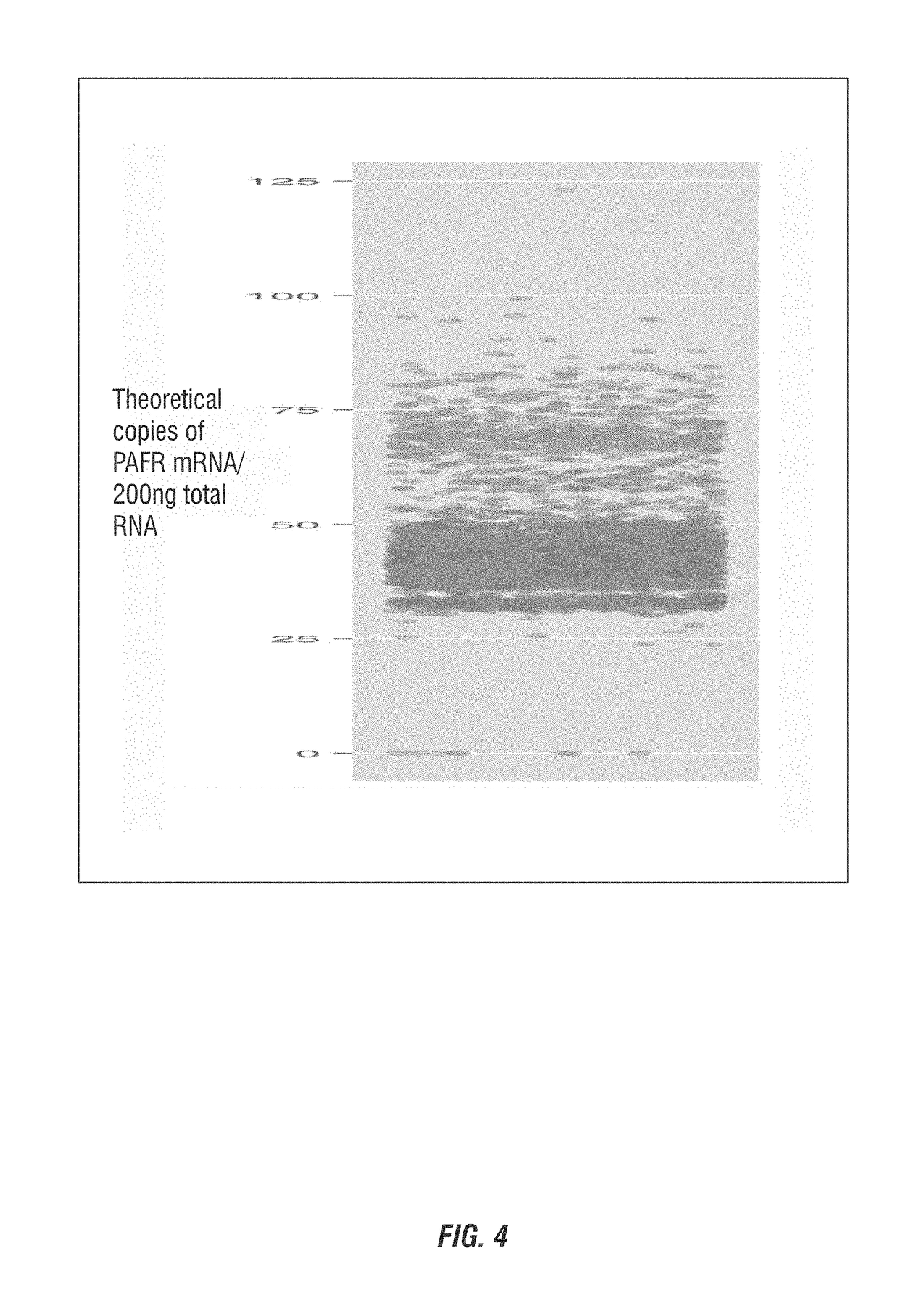Methods and compositions for prevention of feedlot bovine respiratory disease
a technology for respiratory diseases and compositions, applied in the field of compositions and methods for preventing feedlot bovine respiratory diseases, can solve the problems of compromising the growth of affected animals, requiring expensive treatment, and affecting the production and medical costs of bovine respiratory diseases
- Summary
- Abstract
- Description
- Claims
- Application Information
AI Technical Summary
Benefits of technology
Problems solved by technology
Method used
Image
Examples
example 1
[0126]Identification of Pro-Inflammatory Mediator Associated with BRD Susceptibility. Sampling of calf blood samples to confirm the pro-inflammatory mediator of BRD was conducted. Approximately 5 mL of whole blood was collected from the jugular or caudal vein of non-transported juvenile cattle (n=260). Blood was placed in EDTA tubes, and either cortisol (5 ng / mL) or norepinephrine (100 pg / mL) was added to the blood. After an overnight incubation at 37° C. with gentle rolling, half of the blood was used for total RNA isolation followed by a semi-quantitative RT-PCR protocol using 50 ng of RNA and a PAFR forward primer 5′-atggagccaaataattccttt-3′ (SEQ ID NO: 4) and reverse primer 5′-ctaatatttgagggatttg-3′ (SEQ ID NO: 5). Half of the blood was used for second messenger analysis and half was used for PAFR expression analysis. Approximately 10% of blood samples (which further correlates to the approximate incidence of BRD based on USDA data) yielded visible PAFR transcript-specific ampli...
example 2
[0131]Lysed or inactivated commensal oral bacteria activate PAFR-dependent second messenger accumulation in calf blood cells that hyper express the PAFR. The studies of Example 1 were repeated except that lysed or inactivated commensal oral bacteria were substituted for live bacteria. Bacteria were either lysed with a bactericidal antibiotic used clinically against BRD (ceftiofur) or inactivated by a bacteriostatic antibiotic used clinically against BRD (tulathromycin). As shown in FIG. 2, second messenger accumulation was statistically higher in hyper expressing samples incubated with lysed or inactivated bacteria, when compared to cells with normal or no expression of the PAFR.
[0132]As outlined in Example 1, blood was taken from 10 animals deemed to hyper express PAFR (as identified in experiments presented in FIG. 1) and 10 animals deemed to express “normal” levels of PAFR. Approximately 5 mL of whole blood was collected from the jugular or caudal vein of non-transported cattle. ...
example 3
[0134]A PAFR inhibitor blocks the stress hormone- and commensal oral bacteria-mediated second messenger accumulation in calf blood cells that have an increase in expression of PAFR. Studies presented in Example 1 and FIG. 1 were repeated with the inclusion of the compositions comprising the anti-inflammatory drug rupatadine according to the invention. Blood was drawn from 10 animals that have an increase in PAFR expression (those in which an RT-PCR amplicon was visible after 10-15 cycles) and 10 animals with “normal” or no PAFR expression (those in which an RT-PCR amplicon was visible after 30-45 cycles).
[0135]Approximately 5 mL of whole blood was collected from the jugular or caudal vein of non-transported juvenile and adult cattle. Blood was placed in EDTA tubes, aliquoted, and cortisol (5 ng / mL) and norepinephrine (100 pg / mL) were added to some of the blood. The next day, blood samples were incubated with 0 or 106 CFUs / mL of commensal oral bacteria, 0 or 500 nM of the inhibitor, ...
PUM
| Property | Measurement | Unit |
|---|---|---|
| Fraction | aaaaa | aaaaa |
| Fraction | aaaaa | aaaaa |
| Fraction | aaaaa | aaaaa |
Abstract
Description
Claims
Application Information
 Login to View More
Login to View More - R&D
- Intellectual Property
- Life Sciences
- Materials
- Tech Scout
- Unparalleled Data Quality
- Higher Quality Content
- 60% Fewer Hallucinations
Browse by: Latest US Patents, China's latest patents, Technical Efficacy Thesaurus, Application Domain, Technology Topic, Popular Technical Reports.
© 2025 PatSnap. All rights reserved.Legal|Privacy policy|Modern Slavery Act Transparency Statement|Sitemap|About US| Contact US: help@patsnap.com



